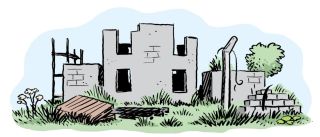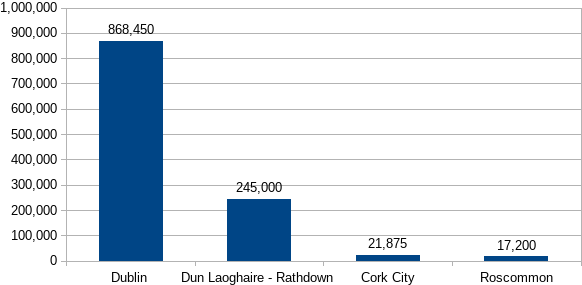Vacant Site Levy - must be clarified and enforced.

The Parliamentary Budget Office (PBO) has just released an analysis of some of the key metrics of the Vacant Site Levy for the third quarter of 2020.
The Urban Regeneration and Housing Act of 2015 (the 2015 Act) sets up the Vacant Site Levy and, since January 2017, the planning department of every Local Authority has to maintain a register of vacant sites in their area that are currently not in use but would be suitable for residential development. The owners of these vacant sites were liable for a levy of 3 per cent of the market value of the site for 2018 which then increased to 7 per cent for 2019, payable in 2020, for lands that remained on the register in both years.
According to a survey conducted by the PBO, to which responses were received in respect of 21 of the 31 Local Authorities, as of the 31st October 2020:
16 Local Authorities had at least one site on their register
Dublin City has the largest number of sites registered, with 54 sites, followed by Kilkenny, with 32 sites.
The 2015 Act states that the planning department in each Local Authority must, as soon as possible after the site has been included on the register, determine the market value of that site. According to the PBO survey:
9 Local Authorities replied with a market value for all their listed sites
6 Local Authorities had values listed in respect of some, but not all, sites.
1 Local Authority (Clare) had no valuations listed.
The valuation of the site is key as the levy is based on the market value and it assists in deciding if the site is suitable for development. In the first year of the register, only four Local Authorities received any payments linked to the almost 400 sites on the register (See Chart 1). The implementation of the Vacant Site Levy has been dogged with issues since its inception. Local Authorities cited reasons for low registrations as a combination of difficulties in establishing market values and ownership for the vacant sites, and the lack of resources to remedy this. Eight Local Authorities have no active register.
Whilst the chief aim of the Vacant Site Levy was to disincentivise land hoarding and encourage site activation, as opposed to being purely an income raising measure, it is important to note is that the funds collected go directly to the Local Authority, not the central Exchequer. Revenues collected by way of the levy are to be spent on housing and regeneration and development within the areas of the vacant sites, with a ceiling of 10 per cent that can be allocated to the administration costs associated with collecting the levy. Ireland’s has a very centralised Government structure, both in terms of decision-making and finance1. The Vacant Site Levy therefore provides one of the few independent income streams at Local Authority level.
For the period January to October 2020, just under €1.2 million was collected by four of the Local authorities. Dublin City collected €868,450, Dun Laoghaire-Rathdown received €245,000, Cork City collected €21,875, and Roscommon received €17,200. (Chart 1). These are not unsubstantial sums of money that can now be allocated to housing initiatives within those areas.
Chart 1 : Vacant Site Levy - Monies Collected

However, as stated above, the aim of the Vacant Site Levy is to stimulate the development of suitable land for residential units. The PBO survey asked Local Authorities to estimate the potential number of housing units that could be delivered if the vacant sites were developed. Dublin City Council had the highest estimation, within a range from 2,788 and 5,575; followed by Sligo County Council, with between 1,225 and 1,750 additional units; Cork County County averaging 1,470 and Kilkenny averaging 1,295.
According to the Social Housing Needs Assessments 2019, published in December 2019, there were 68,693 households on the waiting list for social housing. However, the reality is that c.133,000 households are in need of long-term, sustainable housing. The development of vacant sites for residential use could go some way to support these households to achieve this aim.
In our publication ‘Building a New Social Contract – Policy Recommendations’2, Social Justice Ireland recommended that the legislation introducing the Vacant Site Levy be clarified to facilitate its implementation as part of a new Social Contract that ensures Just Taxation. Even with available limited data provided in response to the PBO survey, it is clear that this must be expedited.
1Local Responses critical in wake of COVID-19 | Social Justice Ireland
2Building a New Social Contract - Policy Recommendations | Social Justice Ireland